
- •2.1. Definition of limit
- •2.2. Computations of limits
- •2.3. Limits of polynomials as or
- •2.4. Limits of rational functions as or
- •2.5. A quick method for finding limits of
- •2.6. Limits involving radicals
- •2.7. One sided limits
- •2.8. Existence of limits
- •2.9. Continuity
- •2.10. The limit of trigonometric functions.
- •2.11. The number e. Second remarkable limit
2.2. Computations of limits
Let f and g be two functions and assume that
![]() and
and
![]() both
exist. Then
both
exist. Then
1.
![]()
2.
![]()
3.
![]() , for any constant k
, for any constant k
4.
![]()
5.
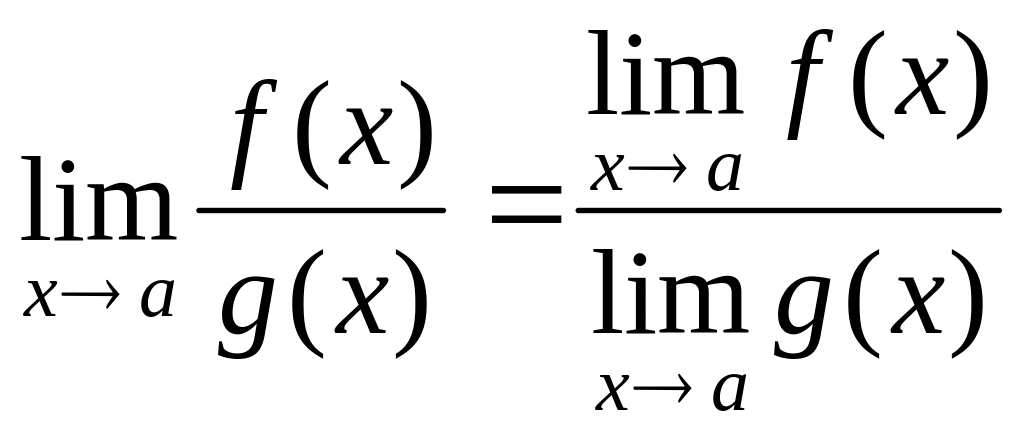 , if
, if
![]()
6.
![]() if
if
![]()
7.
![]() if
if
![]()
![]()
Example:
Find
![]()
Solution:
=![]() -
-![]() +
+![]() =
=
=
-4![]() +
=52-45+3=8
+
=52-45+3=8
Example: Find
![]()
Solution: The numerator and denominator both have a limit of zero as x approaches 3, so there is a common factor of (x-3). We proceed as follows:
=![]() =
=![]() =0.
=0.
Example:
Find
![]()
Solution: The numerator and denominator both have a limit of zero as x approaches -4, so there is a common factor of (x-(-4))=x+4. We proceed as follows:
=![]() =
=![]() =-2/7.
=-2/7.
Example:
Find
![]()
Solution:
= =
=
=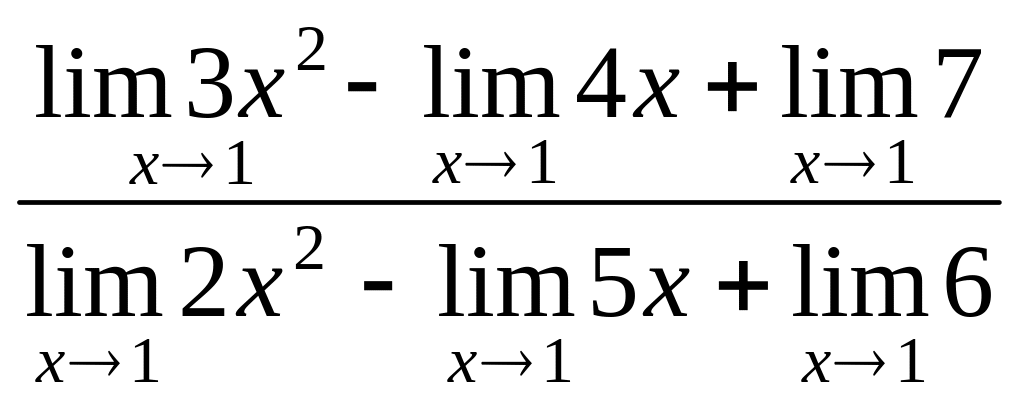 =
=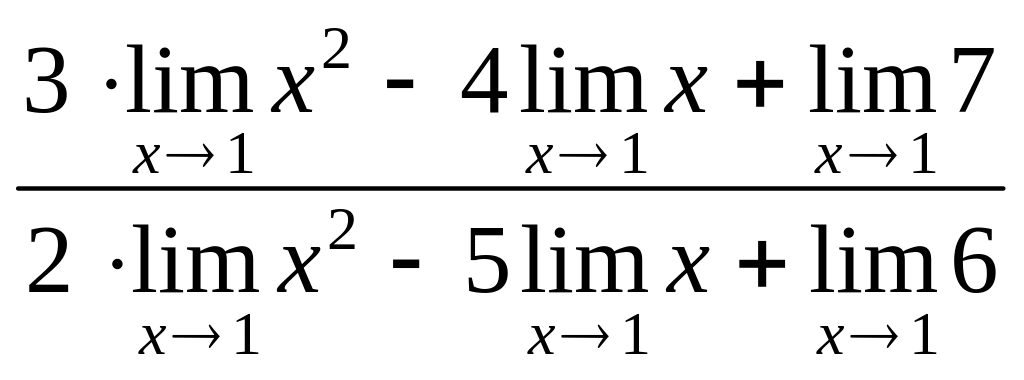 =
=
=![]() =6/3=2.
=6/3=2.
Example:
Find
![]()
Solution: The numerator and denominator both have a limit of zero as x approaches 4. Let us rewrite x2-6x+8 using x2+px+q=(x-x1)(x-x2) where x1 and x2 are roots of equation x2+px+q=0. An equation
x2-6x+8=0 has roots x1=2 and x2=4, so x2-6x+8=(x-2)(x-4).
After substituting we get
=![]() =
=![]() =4-2=2.
=4-2=2.
Example:
Find
![]()
Solution: Again when x=1 both numerator and denominator have a limit of zero. Let us factor given function using identity
ax2+bx+c=a(x-x1)(x-x2)
where x1 and x2 are roots of equation ax2+bx+c=0. The limit can be obtained as follows:
=![]() =
=![]() =
=
=![]() =5/3.
=5/3.
2.3. Limits of polynomials as or
Sometimes it is useful to know how f (x) behaves when x is a large positive (or a negative number of large absolute value).
Rather
than writing “as x
gets arbitrary large through positive values, f
(x)
approaches the number L”,
it is customary to use the notation
![]() .
This is read “as x
approaches infinity, f
(x)
approaches L”,
or “the limit of f
(x)
as x
approaches infinity is L”.
.
This is read “as x
approaches infinity, f
(x)
approaches L”,
or “the limit of f
(x)
as x
approaches infinity is L”.
Similarly,
![]() means
that “the limit of f
(x)
as x
approaches minus infinity is L”.
means
that “the limit of f
(x)
as x
approaches minus infinity is L”.
Remark:
Notations
![]() and
and
![]() are
equivalent to each other, and we will use both of these notations.
are
equivalent to each other, and we will use both of these notations.
Remark: All properties of limits stated above hold when x a is replaced by
or by .
![]() , n=1,2,3,……..;
, n=1,2,3,……..;
![]() ;
;
![]() ;
;
![]() .
.
A
polynomial P(x)
= c0+c1x+c2x2+……..+cnxn
behaves like its term of highest degree as
![]() or
. If cn0,
then
or
. If cn0,
then
![]()
![]() .
.
Example:
Find
![]()
Solution:
![]() =
=![]() .
.
Example:
Find
![]()
Solution:
![]() =
=![]() .
.
Remark:
It is important to keep in mind that “![]() ”
or “
”
or “![]() ”
is not a number. The last two limits above do not exist.
”
is not a number. The last two limits above do not exist.
2.4. Limits of rational functions as or
To find limits of rational functions as or we divide the numerator and denominator of a rational function by the highest power of x that occurs in the denominator. What happens then depends on the degrees of the polynomials involved.
Example:
Find
![]()
Solution: Divide the numerator and denominator by the highest power of x that occurs in the denominator; this is x1=x.
We obtain
=![]() =
=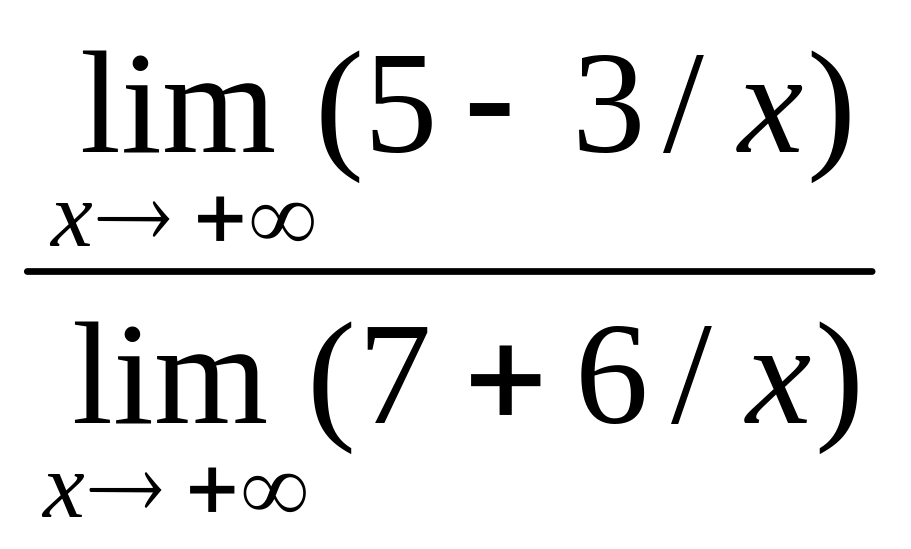 =
=
=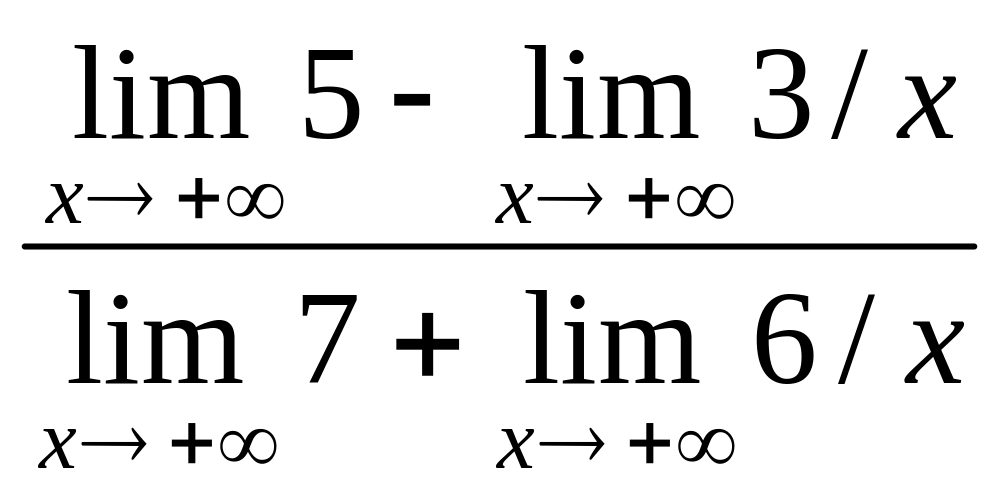 =
=![]() .
.
Example:
Find
![]()
Solution: Divide the numerator and denominator by the highest power of x that occurs in the denominator, namely x3. We obtain
=![]() =
=
= .
.
Example:
Find
![]()
Solution: Divide the numerator and denominator by x to obtain
=![]() ,
,
since
7x2-4x
+![]() ,
,
![]() ,
and
,
and
![]() as
as
![]() .
.
